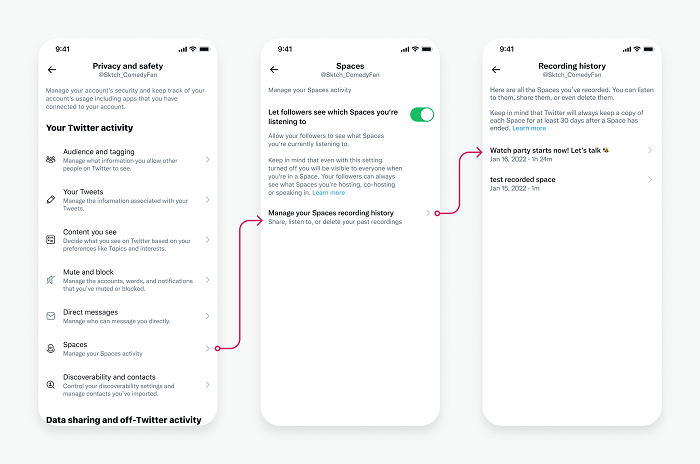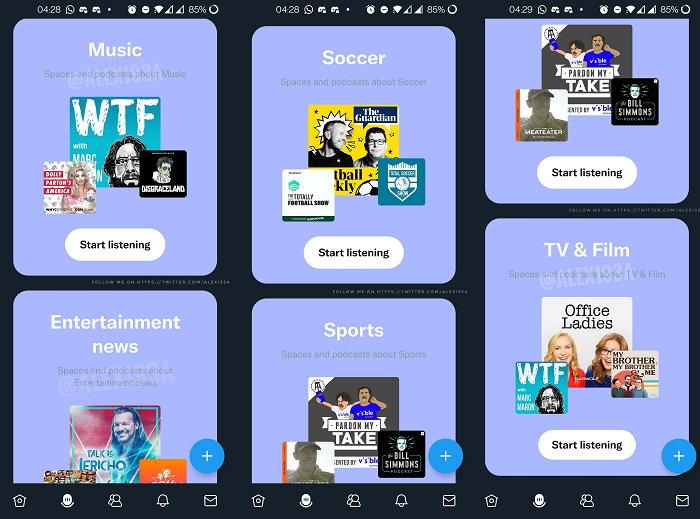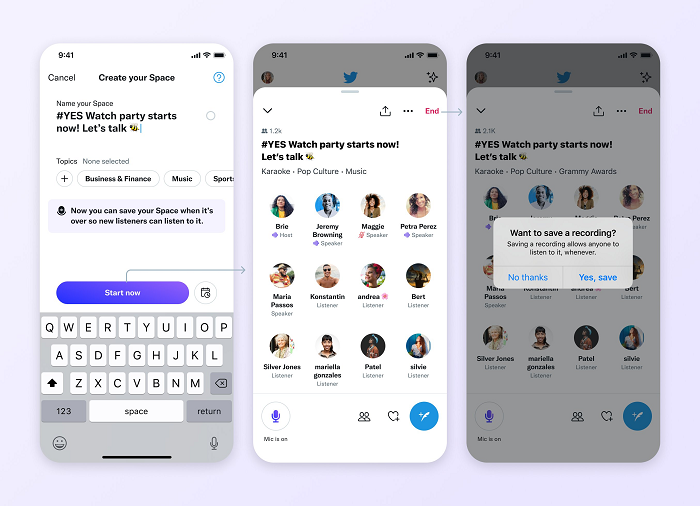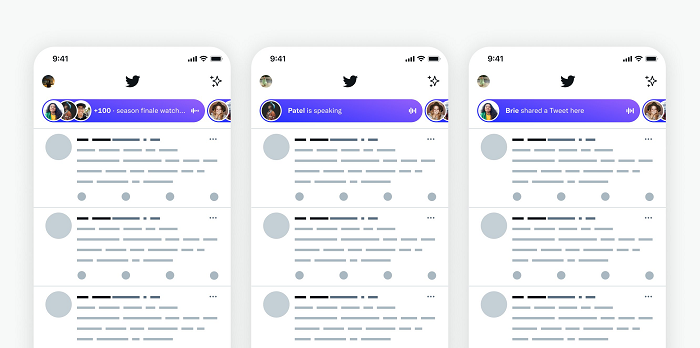I remain unconvinced that Twitter Spaces will ever become a thing, but Twitter itself seems certain that there’s major growth potential there, as evidenced by its continued push to add more elements to its Spaces offering, in order to lure more listeners across to its Spaces tab, and maximize listenership within its audio broadcasts.
This week, Twitter has rolled out another set of Spaces updates, including permanent recordings (as opposed to them deleting after 30 days), the capacity to save recordings after broadcast, and new details within the Spaces bar at the top of the app.
First off, on permanent recordings – after initially launching its Spaces recording feature to all users back in January, Twitter is now extending the life of those recordings beyond the initial 30 day period.
now your Spaces recordings will live as long as you want them to! starting today, hosts on Android are able to host a Space that lasts indefinitely
iOS is coming up next!
— Spaces (@TwitterSpaces) June 30, 2022
That’ll provide more capacity to attract listeners over the longer term, and keep your conversations alive in the app.
In addition to this, Twitter’s also adding a new listing of your recorded Spaces within your app settings menu, where you’ll be able to play each session back, delete those that you don’t want to keep, or share a recording direct from the list.

That’ll enhance the functional value of Spaces chats, making them more podcast-like, and more of a vehicle for ongoing promotion and audience building – though it does seem to also maybe go against what made audio platforms like Clubhouse so attractive to begin with, in that they were live, in-the-moment chats that you had to be there to catch.
But podcasts is clearly more of the angle that Twitter’s now going for, based on these example screens of another new test in the back end of the app.

As you can see in these images (shared by app researcher Alessandro Paluzzi), Twitter’s also developing ‘Stations’ within the Spaces tab, which would incorporate podcasts into its audio stream, providing even more options for tuning into on-demand audio content within the app.
That could make Spaces recordings even more valuable, and potentially help Spaces broadcasters translate their work into a monetizable podcast process – but do Twitter users really want to tune into podcasts from the app? I mean, we have Spoitify and Apple Podcasts and various other options available.
Could Twitter really become a key hub for audio content like this?
In some ways, it seems unnecessary, but then again, the real-time nature of tweets lends itself to topical discussion, and that could make it a good hub for all of these types of discussions and content, including Spaces, Spaces recordings, podcasts, etc.
And again, that would better facilitate connection between Spaces and recorded audio. It just depends on whether Twitter users will actually come to rely on the app for their latest podcast content.
On another front, Twitter will now also enable iOS users to record a Space when the broadcast is over, even if they didn’t hit ‘Record’ during the session.

Which also means that the ‘REC’ marker would not have been present during the session, alerting participants to the fact that this was being recorded, which could be problematic for some contributors.
In some ways, it seems like Twitter didn’t offer these options initially because it thought that it wouldn’t be able to facilitate the data storage required to keep all of the many recordings in its data banks, but now, with so few people broadcasting, it’s maybe found that this won’t actually be a problem.
A sort of ‘glass half full’ element, I guess.
Finally, Twitter’s also adding new details into the Spaces bar on Android, including additional, scrolling insights into who’s hosting, the topics being discussed, who’s shared a Tweet in the chat and more.

That could entice more users into the session – or at the least, bring even more attention to the Spaces bar at the top of the app by providing more, bigger info.
Though again, I don’t know. It doesn’t seem like Spaces is really catching on, going on the participant numbers in the Spaces stream. And while the addition of podcasts could be interesting, I don’t see Twitter becoming a key app for audio content, especially as the Clubhouse-led audio trend continues to die down.
But maybe the engagement numbers are better than it seems. I mean, you’d have to assume that they are, given Twitter’s ongoing investment in the functionality – through Twitter CEO Parag Agrawal did note last month, that the company had not hit intermediate milestones on its growth plans, based on its investment in new functionalities like Spaces, Communities and Twitter Blue.
Twitter hasn’t shared specific data, so maybe there’s more to it, and that’s why it’s so keen to push ahead with more Spaces tools. But either way, it’s giving it its best opportunity to succeed, and it’s seemingly not done yet with its Spaces development.
Will that, eventually, result in Spaces becoming a thing? Only time will tell.



